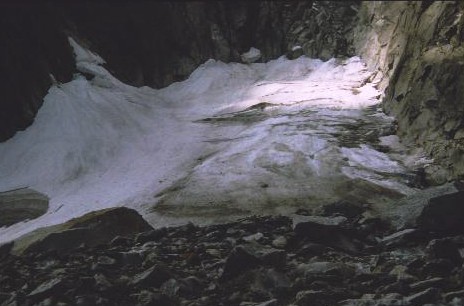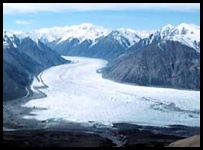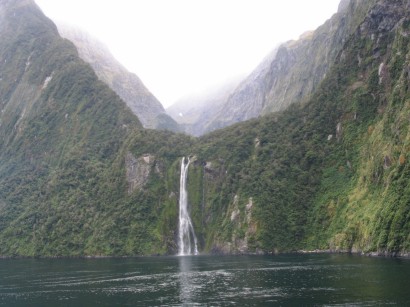I know that this should probably have come before the last two posts but I only thought to include it last night.
As can be seen from the title, this post is basically looking at the four types of glaciers, those being niche glaciers, cirque glaciers, valley glaciers and continental glaciers.
Niche Glaciers
These are the smallest of all glaciers and form in hollows, sometimes growing into a cirque glacier. When a niche glacier grows, it’s erosional powers increase and gradually the hollow in which it has been residing is eroded into an armchair shaped feature known as a cirque, corrie or cwm. These are often bowl-shaped basins.
Cirque Glaciers
(Also known as corrie glaciers), are typically small glaciers that can be found within bowl-shaped basins at the top of a mountain, and are sometimes what is left of a once much larger valley glacier. These form from a small patch of snow and gradually advance into a small glacier, with some of which growing so large that they spill over into valley glaciers. When two cirque glaciers come together back to back due to erosion, they create a knife-like ridge known as an arête. When three cirques erode back to back they create a pyramid shape to the top of the mountain known as a pyramidal peak (or horn if extremely steep). When a corrie no longer holds a glacier, a shallow depression at its base can often be seen (known as a cirque depression). It is here that water often accumulates into what is known as a cirque lake or tarn.
Cirque Glacier
Arête
Pyramidal Peak
Cirque lake
Valley Glaciers
These are quite obviously glaciers that are found in and confined to a valley (usually following the course of an old river, which would erode the valley into a ‘v’ shape). Valley glaciers usually originate from corries, and work their way down the easiest path available, eroding the landforms that they pass, with ‘v’ shaped valleys being widened (through erosion) into ‘u’ shaped valleys. Sometimes these smaller valley glaciers may meet therefore creating even larger glaciers with increased erosional powers. When this occurs, it can lead to the creation of hanging valleys which form when the larger glacier erodes at a faster rate than the erosion of the tributary valleys, with the tributary valley being higher than that of the main glacier valley. Any rivers, streams or meltwater that then flows along the tributary valley will create a waterfall as they pass from the tributary valley to the largely eroded ‘u’ shaped valley.
Valley Glacier
Hanging Valley
Continental Glaciers
Forming millions of years ago, they cover both land and sea and are the largest of all types of glacier. Continental glaciers are basically a large ice sheet that can cover thousands of miles, become several miles deep and are found in the Polar Regions such as those covering the Antarctic and Greenland.








Good. I am really impressed with your writing talents and also with the layout on your weblog. Appreciate, Is this a paid subject matter or did you customize it yourself? Either way keep up the nice quality writing, it is rare to peer a nice weblog like this one nowadays. Thank you, check also virtual edge and event kpis
ReplyDeleteThis comment has been removed by the author.
ReplyDeleteperde modelleri
ReplyDeletesms onay
mobil ödeme bozdurma
nft nasıl alınır
Ankara Evden Eve Nakliyat
Trafik sigortasi
dedektör
websitesi kurmak
Aşk romanları
pendik beko klima servisi
ReplyDeletetuzla lg klima servisi
tuzla alarko carrier klima servisi
tuzla daikin klima servisi
çekmeköy toshiba klima servisi
ataşehir toshiba klima servisi
çekmeköy beko klima servisi
ataşehir beko klima servisi
maltepe lg klima servisi